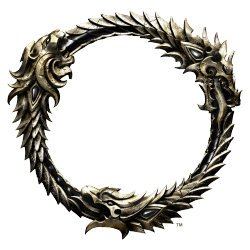Maintenance for the week of December 15:
• PC/Mac: NA and EU megaservers for maintenance – December 15, 4:00AM EST (9:00 UTC) - 12:00PM EST (17:00 UTC)
• Xbox: NA and EU megaservers for maintenance – December 15, 4:00AM EST (9:00 UTC) - 12:00PM EST (17:00 UTC)
• PlayStation®: NA and EU megaservers for maintenance – December 15, 4:00AM EST (9:00 UTC) - 12:00PM EST (17:00 UTC)
• PC/Mac: NA and EU megaservers for maintenance – December 15, 4:00AM EST (9:00 UTC) - 12:00PM EST (17:00 UTC)
• Xbox: NA and EU megaservers for maintenance – December 15, 4:00AM EST (9:00 UTC) - 12:00PM EST (17:00 UTC)
• PlayStation®: NA and EU megaservers for maintenance – December 15, 4:00AM EST (9:00 UTC) - 12:00PM EST (17:00 UTC)
Dwemer: The Most Slandered People in History. The Seventh House Theory
Aigym_Hlervu
✭✭✭✭✭
DWEMER: THE MOST SLANDERED PEOPLE IN HISTORY. THE SEVENTH HOUSE THEORY
by Cygemai Hlervu
CONTENTS
1. Introduction.
2. The Seventh House. References.
3. Dwemeri Religion.
4. Chimer & Dwemer. Appearance.
5. Chimer & Dwemer. Architecture.
6. The Exodus.
7. Dwemer of Skyrim.
8. Conclusion.
1
-
Aigym_Hlervu✭✭✭✭✭INTRODUCTION
Arts created by Ognevka Fenella and Dmitry Ilyutkin.
Under these sun and sky I greet you warmly, muthsera! Or, let's say it a bit more Dwemer-like - helw myfrnds .
.
A huge topic here and it took me much time to write it down in order to let you read something interesting these winter evenings, mates. I haven't written many details here I've been gathering on the topic of the Dwemer for.. almost 19 years since TES III, so, we can discuss them later here. Or, maybe I'll edit these posts if I remember something I have forgotten to mention now. Ok, let's start.
I won't touch here any facts very well known by everyone like those that the Dwemer were not that short dwarves, or some well-known books or dialogues describing the also well known Dwemeri history and culture like their airships, steam technologies, Aetherium, the Dwemer artifacts and devices, the influence the Dwemer caused on the Clockwork City, the Battle of Red Mountain, etc. - we all know them well. The main mystery about the Dwemer is considered to be of how did they disappear, but my personal point of interest is to theorize about another blank space in the lore - the way of how did they appear! Oh, I can speak hours on this topic, and I have invented 2 credible theories of my own on that. One of them is stated in this thread.
I suppose the question of how did the Dwemer appeared is as interesting as the truth about their disappearance. The purpose of this theory has several points. First, it negates all those demands to implement the Dwemer as a playable race because according to this theory the Dwemer are not a separate race, and thus cannot be implemented that way. Secondly, it makes all the material traces of the Dwemer turn into the cultural heritage of the Dunmeri nation only.
The first thing I have to say here is that the history of the Dwemer we all know today is written by those who defeated them or were lucky enough to live longer. Showing them as godless evil genius who enslaved the Falmer is both profitable to the Tribunal Temple priesthood who indirectly derive the very definition of god based on the asumption that the Dwemer were if not a separate race then a completely alien culture (I'll show it's another Tribunal's a lie below), and to all other Tamrielics who are either indifferent to the Dwemer or treat them as heretics. Oh, yes, if only the Dwemer did not disappear entirely, their fate would have definitely become equal to the one of the Sixth House of the Dagoths - their very name would be erased from the history while their children would have been distributed to be raised among the other five Great Houses. On the other hand, if House Dagoth would have vanished entirely, I suppose they would have been called a separate race too - so alike are they in their appearance with the Dwemer.
We have no credible Dwemeri chronicles left in order to understand the Dwemeri perspective of the historical events they took part in or witnessed, but history in most cases can't lie totally - it can only change the view points and accents. Sometimes it changes the whole picture. Anyway, as it has always been, whatever evil is commited today, it's always easier to shift the blame on the dead.. Reading between the lines and giving a closer look into the events described in the modern chronicles can bring some light on what the Dwemer could have actually been. My research of various contradicting sources makes me see the Dwemeri history from some other angle than the one we all got used to.
Some major points here that I shall discuss further on:
1. The Dwemer were a part of the Velothi people who left the Aldmer in their Exodus.
2. The Chimer and the Dwemer were the people of the same race differing only in some traditions like wearing beards. They were as different and the same time as alike with House Telvanni, as House Telvanni has been different and alike with House Hlaalu. The Dwemer are Chimer. And vice versa.
3. Veloth's teachings had nothing common with the Daedra worship at the beginning of the Velothi Schism. The Tri-Angled truth was revealed to Veloth later on either during the Exodus (i.e. after he proclaimed his ideas and gathered the people around) or right before entering Morrowind. I suppose it happened a bit earlier, before they entered Skyrim and reached the Dunmeth pass to enter Resdayn.
4. The Dwemer could have been the worshipers of Julianos - the most "secular" and mysterious cult of all the Aedra devoted ones.
5. The Dwemer were just another, the Seventh, Great House of the Velothi people.
Back to contents.Edited by Aigym_Hlervu on 22 January 2021 19:472 -
Aigym_Hlervu✭✭✭✭✭THE SEVENTH HOUSE. REFERENCES

Just like each of the Great Houses differ much in it's culture, architecture, ways and views on life from the other Great Houses, the Seventh House of the Dwemer was indeed different too, but still it was a Great House consisting of the same race that populated the other Great Houses.
Some sources describing the Dwemer as an ordinary Chimeri Great House:
The Real Nerevar by a Telvanni retainer - "When the Dunmer followed Veloth to Morrowind, they were many warring clans, with no law or leader in common. One Dunmer warlord, Nerevar, had the ambition to rule all the Dunmer. In that time, House Dwemer were great enchanters, so Nerevar went in secret to a Dwemer smith and asked for an enchanted ring that would help him. The ring gave its wearer great powers of persuasion; for safety, it was enchanted to instantly kill anyone who wore it except Nerevar. The ring was called Moon-and-Star, and it helped Nerevar unite the various clans into the First Council. Later, however, disputes over religion divided the Council, with House Dwemer and House Dagoth on one side and all the other Houses on the other. Dwemer and Dagoth invited Orc and Nord clans as allies, and held northwest Morrowind, while Nerevar mustered the other Houses and nomad tribes and marched to meet the Dwemer-Dagoth-Westerner forces".
The War of the First Council by Agrippa Fundilius - "The War of the First Council was a First Age religious conflict between the secular Dunmer Houses Dwemer and Dagoth and the orthodox Dunmer Houses Indoril, Redoran, Dres, Hlaalu, and Telvanni. The First Council was the first pan-Dunmer governing body, which collapsed over disputes about sorceries and enchantments practiced by the Dwemer and declared profane by the other Houses."
As we see it, the Agrippa's witness supports the previous one of the unnamed Telvanni retainer who hadn't named the sources of his text. The Telvanni could actually be that "Dunmer" source of Agrippa's work as well as he could be a straight witness of the events himself, or he could use just the same sources Agrippa used were he living later. Anyway, since Agrippa's chronicle is based on the various Imperial and Dunmer sources, and since it supports the Telvanni's chronicle, we can assume that it is possible that the Telvanni chronicler is credible. Both authors speak of the Dwemer as if they were of the same race the Chimer were, and thus the Dwemer were a Chimeri Great House who formed the First Council.
The Lost Prophecy by Gilvas Barelo, Abbot of Holamayan - "The 'unmourned house' could be either or both of the lost Great Houses of the Dunmer -- House Dwemer and House Dagoth" as he says it regarding the lines 6 and 7 of the prophecy: "Star-blessed hand wields thrice-cursed blade, To reap the harvest of the unmourned house". Indeed, the "unmourned house" could mean here not only House Dagoth, but the Dwemer too.
Barelo continues in his Seven Curses work - "Lines 1-3: Ambiguous. May refer to the impiety of the god-mocking House Dwemer, or the treacherous diplomacy of the subtle House Dagoth, or both. House Dagoth, however, was reviled as oath-breakers for their treachery at Red Mountain".
This generic dialogue repeated by many different NPC on the War of the First Council asked in the Third Era Morrowind tells us that the views on the Dwemer as the Seventh House are also common to the folk consciousness and is not something known by scholars only - "The first government of all Morrowind was called the First Council, comprised of representatives from all the Dunmer Great Houses. This First Council mobilized to suppress a civil war. A rebel house, House Dwemer, joined with Nord and Orc clans to invade northern Morrowind. The rebels, invaders, and a traitor house, House Dagoth, were finally defeated and destroyed at the Battle of Red Mountain. See Agrippa Fundilius' book, The War of the First Council, for a more complete account".
And so on. As you see it, both the written sources and the common people make no difference between the Chimer and the Dwemer, moreover they even underline that they are the same race ("rebel house, House Dwemer, joined with Nord and Orc clans"). None of these sources speak of the Dwemer as a separate race. And none of the foreign nations have ever been called a great house by the Chimer and the Dunmer. "House Nord", "House Altmer" or "House Bosmer" - sounds really weird. Still there are also sources that made us believe that the Dwemer were a separate race like the Pocket Guide to the Empire, 3rd Edition: All the Eras of Man by the Imperial Geographical Society and the Anuad Paraphrased, but as you see it, they are mostly non-dunmeri ones - they are the sources of those who's ancestors have never lived with the Dwemer in one country. But the major source that actually made all the questions fade is, of course, Yagrum Bagarn himself. Bagarn says it several times "my race", "our race", "Dwemer race" and it surely made us believe that the Dwemer were such a separate race. So credible he was, but pay your attention that he also mentions the Dunmer, saying not a word about his contemporary Chimer, in spite of the fact the Dunmer were not present that time yet - he spoke those words to a modern 3rd Era listener. This made me think he used the word "Dwemer" just the same way he used the word "Dunmer" in those dialogue lines, i.e. to make it more comprehensive to a contemporary Third Era listener. I.e. to us. The reason of such a separation of terms regarding the same race will be discussed further on here.
Regarding the word "Dwemer" I also recall the words of our old friend Hasphat Antabolis - "Elves use the term "Dwemer," connoting variously "deep-delving," "profound," and "close-counseled"; Imperial usage is "Dwarven," derived in fable from the affectionate regard of the Giant races for their "little" Dwemer friends".
I have marked those words because I think it is the most accurate meaning, i.e. the "wise elves". Why the wise? What was the difference they had with the Chimer? Well, here it's time to speak of Julianos.
Back to contents.Edited by Aigym_Hlervu on 22 January 2021 19:511 -
Aigym_Hlervu✭✭✭✭✭DWEMERI RELIGION
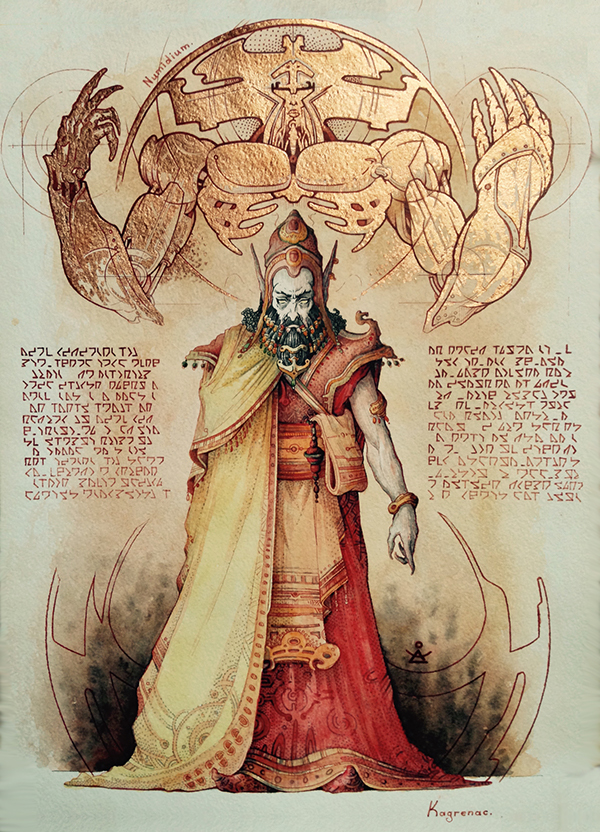
Dwemer are considered to be secular people who, being the Chimer's "brethren, the Dwemer, scorned the Daedra, and mocked our foolish rituals, and preferred instead their gods of Reason and Logic". Yeah, they've never mocked any ritualsof any other race, but decided to mock the Chimeri ones.. Ah, that Tribunal's propaganda.. Ok, so the "Gods of Reason and Logic" - whoever could they be? Both Reason and Logic do seem to be certain spheres of influence of one of the deities. The Aedric cult of Julianos (the god of Wisdom and Logic - compare it to Reason and Logic) could be the actual "religion" of the Dwemer since such things as love, wisdom, etc. are governed either by the Aedra or the Daedra. Or it could turn into a religion later since it is an ancient merethic tradition of Aedra worshippers to turn their ancestors or some great contemporaries into gods (like Xarxes, Syrabane, etc.). It's an absolutely side remark here, but Julianos could have also been a typical mortal Dwemer: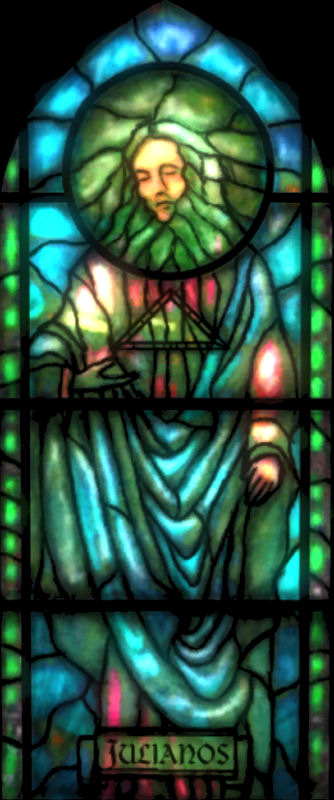
Cult of Julianos differs much from the rest of the Aedric or Daedric cults. You might remember the TES II descrption of the School of Julianos - "The School of Julianos is no mere temple, dedicated to mindless obeisance to a distant and hazy God figure. Julianos is a god, to be sure, but foremost he is a symbol of learning, logic, philosophy, and wisdom. We espouse no moral philosophy other than the goodness of knowledge. As the great Psijic once said, the power of ignorance can truly shatter mithril like glass. That is our enemy. Scholarship is a long and difficult journey, and Julianos does not tolerate those who wish to shorten it. However, He does bless those who generously donate to His School with a temporary increase in their magical skills. While we advocate literacy and education for all Tamrielans, our policy for those who wish to join the School itself is very stringent. We have little time to waste training the slow and the lazy".
As you see it, it's so far from the traditional rituals, priests and churches. Julianos is not mentioned in the traditional pantheon of any of the Elven nations in any work like that huge tome the Varieties of Faith of Karkuxor, but is appreciated by two human nations only - the Bretons and the Imperials, i.e. by those whom the Dwemer could have helped the most in their struggle against the Ayleids. Julianos the God of Wisdom and Logic, literature, law, history, contradiction, language and mathematics who is associated with magic, and thus is often revered by wizards, the keeper of the Elder Scrolls - this could be the Reason and Logic the Dwemer, the "profound elves" could value. From Raynor Vanos we also learned that the Dwemer could not be the cultists of Akatosh - "I understand so much more now than I once did. Don't think of time and space as a road upon which you travel, but rather a rope, or a cable. Many threads, all bound together with no beginning or end". Something that would certainly be considered a heresy by any of the Akatosh priests who view time as an aspect of their dragon.
None of the Elven pantheons acknowledges Julianos. What could be the reason? From the official history we know that Alessia created the Imperial pantheon of gods by "borrowing" them both from the Elven and Nordic pantheons in order to unite them all under her rule. Julianos was among those gods, but it is never said what were his origins. I suppose Julianos could be "borrowed" from the Dwemer. There is simply no other credible option. When the Alessian Rebellion started out, Julianos created the Shield of the Crusader for Pelinal Whitestrake, to help him defeat Umaril the Unfeathered and the Daedraphile slaveowning Ayleids - a shield that allows its wielder to reflect spells back at their casters or deflect them entirely just like the Dwemeri Spellbreaker shield. This story from TES IV (if I remember it correctly) could be a trace of a possible Dwemeri help to the human slaves - some Dwemer smith or a Tonal mage could do such a job for sure. After the Rebellion's success in 1E 243 "Alessia incorporated elven Aedra into her Eight Divines pantheon" in order to appease her Ayleid and Ayleid-influenced vassals. One of those aedric gods was Julianos - someone suprisingly worshiped only by the Imperials and Bretons and somehow the only deity among the traditional Nordic pantheon abandonded by the Nords. I suppose the Nords respected him, if not worshipped, during the times of their wars with with the Falmer when some of the Dwemeri city-states could be allied with the Nords. And the abandoning of Julianos could have happened because of the King Gellir's invasion into the Dwemeri territory during the end of the Aetherium Wars, then because of the King Borgas' affiliation to the teachings of prophet Marukh and finally because of the King Wulfharth's religious reforms. For now just remember that according to the lore, no Elves have ever been worshipping him, so, it's an interesting question - who were those worshippers Alessia borrowed Julianos from. Dwemer with their Wisdom and Logic seem to be the most credible answer.
Veloth also fits perfect as the prophet of Julianos, according to the Veloth the Pilgrim - "Although he wielded a mighty warhammer—Veloth's Judgment—Veloth is thought of mainly as a peaceful and scholarly soul, to which the Dunmer's healing enchantments that bear his name attest".
Compare it with the spheres of the Three "Good" Daedra and imagine the features of, say, a possible Mephala's or a Boethiah's prophet.
At this point we have the following chronological picture:
1. Veloth & Co. disagree with corruption, greed, poverty, decadence, slavery and the reforms that turned the Aedra-ancestors of only the "betters" to gods (I'll speak of it further in the Exodus section).
2. Veloth & Co. go into exile.
3. The Three Good Daedra interfere and teach the Velothi the Tri-Angled truth. Veloth "almost single-handedly began the god-cult worship of the "Good Daedra" prior to the coming of the Tribunal". We don't know if it is true, or if he actually opposed it but was later credited to making such a drastic change by the victorious Daedra worshipers and the ALMSIVI, but we have what we have. I believe that the later Daedra worshippers simply credited him with it just like they did it several times when they turned the Three Good Daedra into the Anticipations during the Almsivi, and later the Almsivi into the Temple saints when they turned the Anticipations back to the now called "Reclamations". They've been doing it constantly all the time! So there is no reason to think they've spared Veloth.
4. At this point the Velothi split in two groups of the Orthodox Houses-clans (Daedra worshippers) and the Secular ones who continued to "worship" their god-ancestor Julianos (Houses Dwemer and Dagoth).
5. The High Velothi culture falls.
What I think here is that the Dwemer (along with House Dagoth who were also capable of constructing the underground structures, building strongholds and were capable of recreating Numidium that shows that they were quite smart too) could be the only ones who actually heeded the teachings of Veloth, while the Chimer seduced by the Daedra formally kept respecting Veloth, but betrayed all of his teachings, and later credited him with doing something he has never done - they will do the absolutely same thing when they will give up the Three Good Daedra cult and will call them the Anticipations. The ESO showed us enough of that: Boethiah sent Vox to take Veloth's hammer, kill people and desecrated Almalexia's temple in Mournhold, Azura calls Vivec an impostor and murderer, and she literally scorns him ("Helping that arrogant impostor? Whatever gave you the idea that I was helping that murderer?"), and Mephala openly calls Sotha Sil a false god ("Sotha Sil, the false god") - a nice recognition of the Almsivi divinity, indeed.
Back to contents.Edited by Aigym_Hlervu on 22 January 2021 19:520 -
Aigym_Hlervu✭✭✭✭✭CHIMER & DWEMER. APPEARANCE
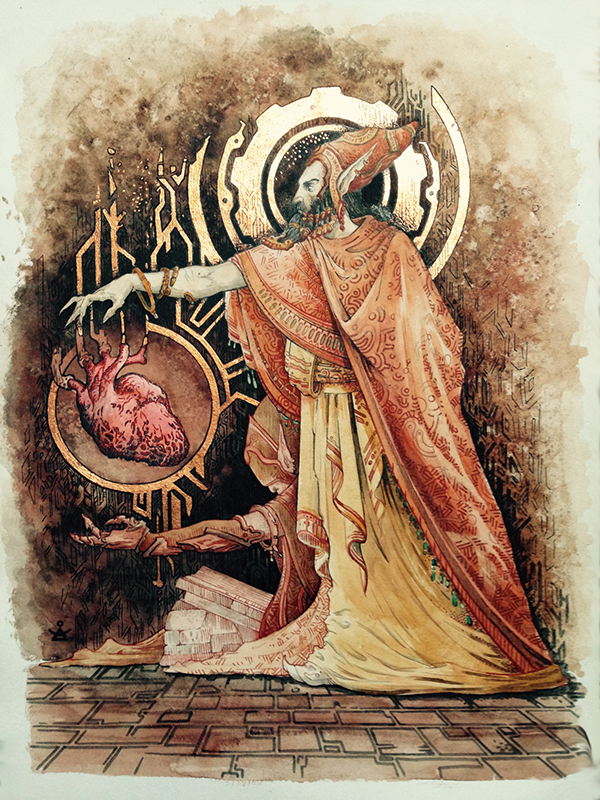
House Dagoth retainers are said to be Chimer by all the sources. It is a generally accepted fact. But whom do they look like more actually - the Chimer or the Dwemer? I think this is a witness that they were all one race actually with no differences in their appearance, but only differing in their outfit traditions though not that dramatically. Shave a Dwemer and you will see a Chimer .
.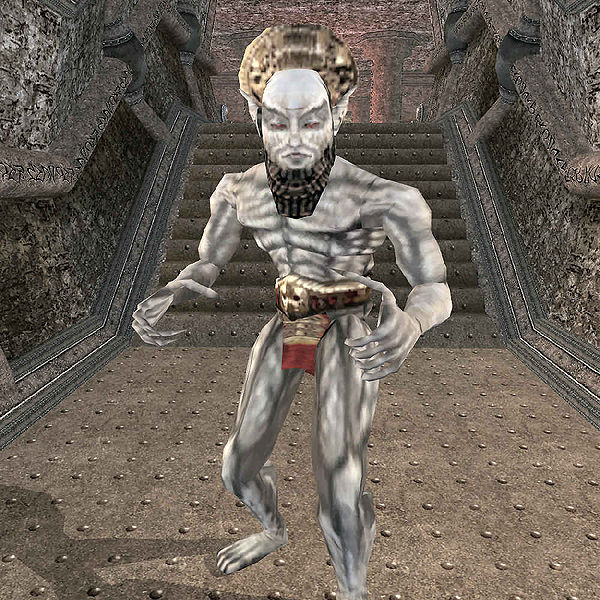
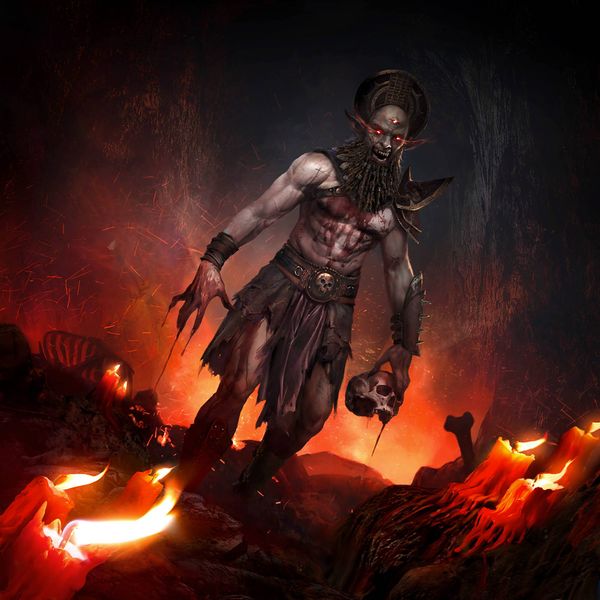
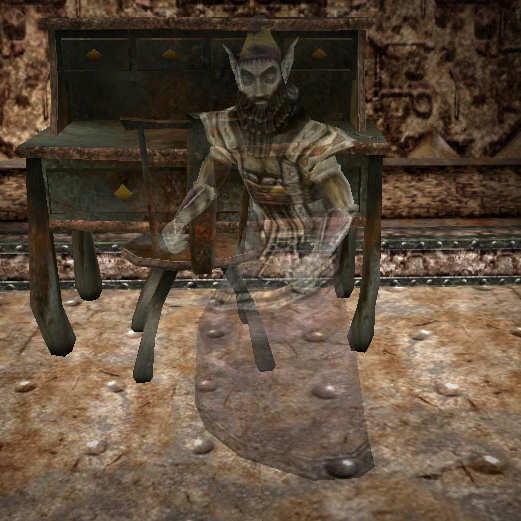
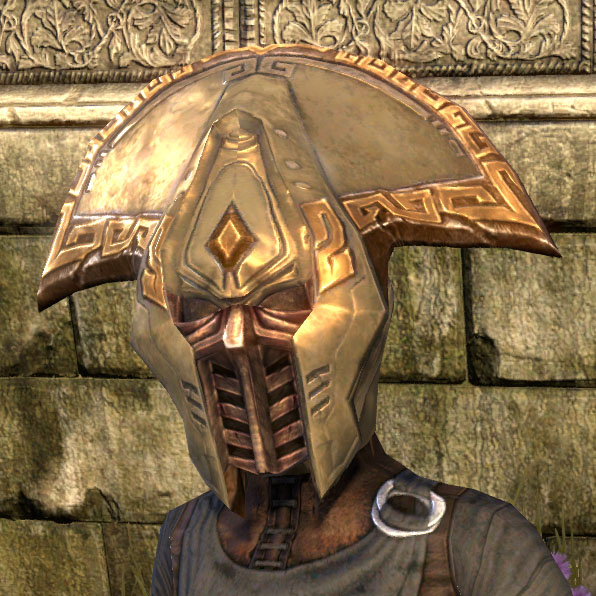
Back to contents.Edited by Aigym_Hlervu on 22 January 2021 19:530 -
Aigym_Hlervu✭✭✭✭✭CHIMER & DWEMER. ARCHITECTURE
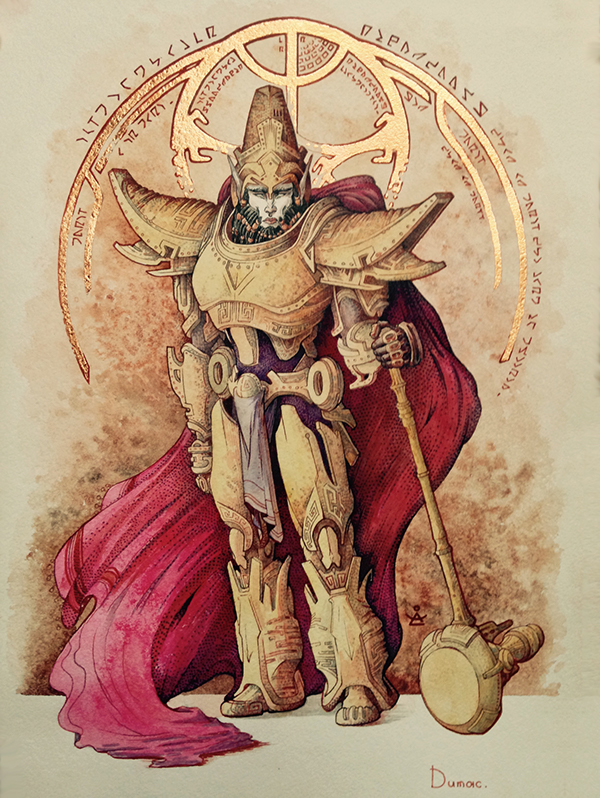
The Chimer built the famous Velothi towers and Chimeri strongholds that all are heavily based on the architecture of the Dwemer in Skyrim (compare it with the style of Mzulft, Kagrenzel, Bthardamz, Nchardak, etc.). The ancient Chimeri strongholds are also built using the high-end technologies like the Propylon Chambers system that linked the cities into a single transportation network. The lore has no information neither on who could give them such technologies, nor on how could they develop to such a level being a "downgraded" nation in comparison with the Dwemer. I suppose that the small differences in architecture between the Chimer and the Dwemer is another good evidence that these two communities were actually the same race. Have a look at the architecture style differences between the buildings of Houses Redoran, Hlaalu, Telvanni, Dres and you'll see that they differ really much, but nobody even thinks of declaring the retainers of those Great Houses separate races. I suppose the same way we should treat the Dwemer.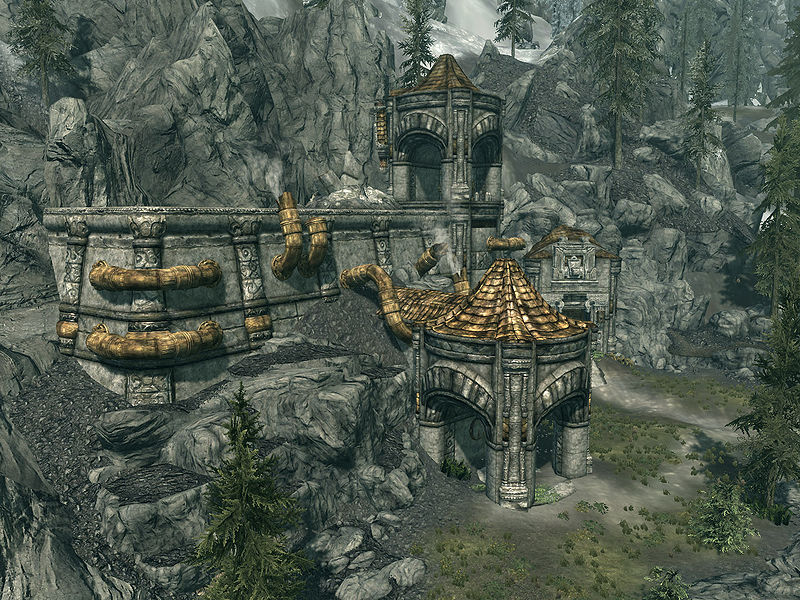
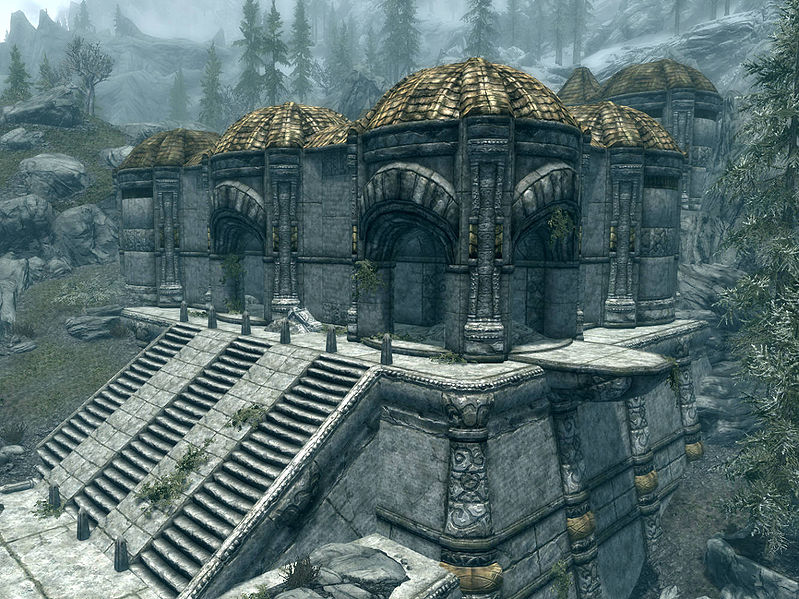
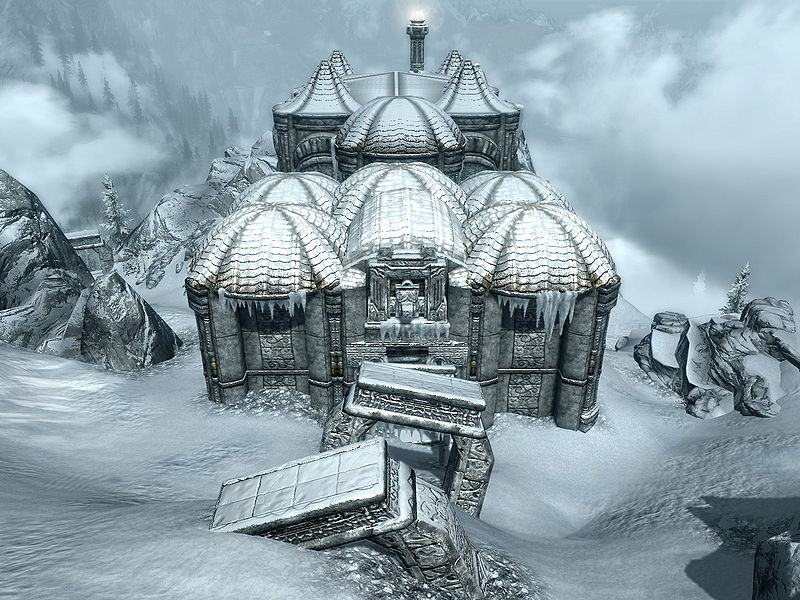
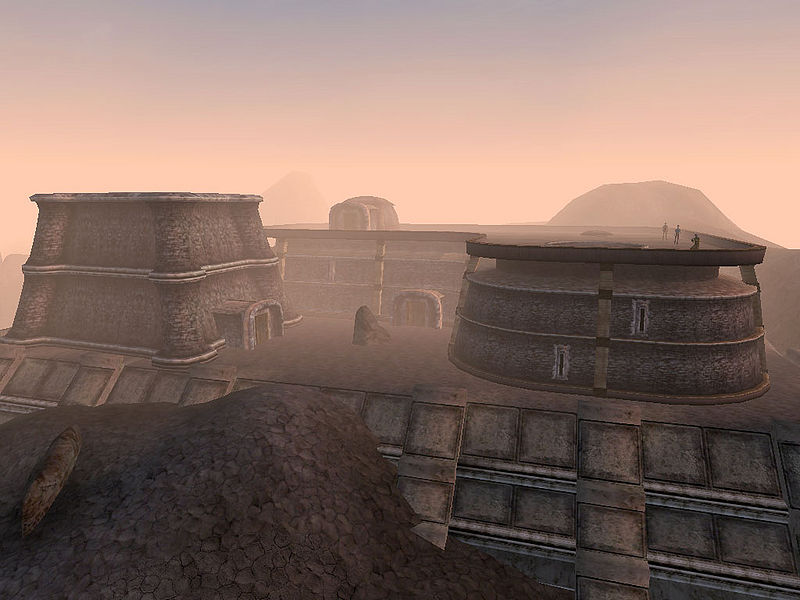
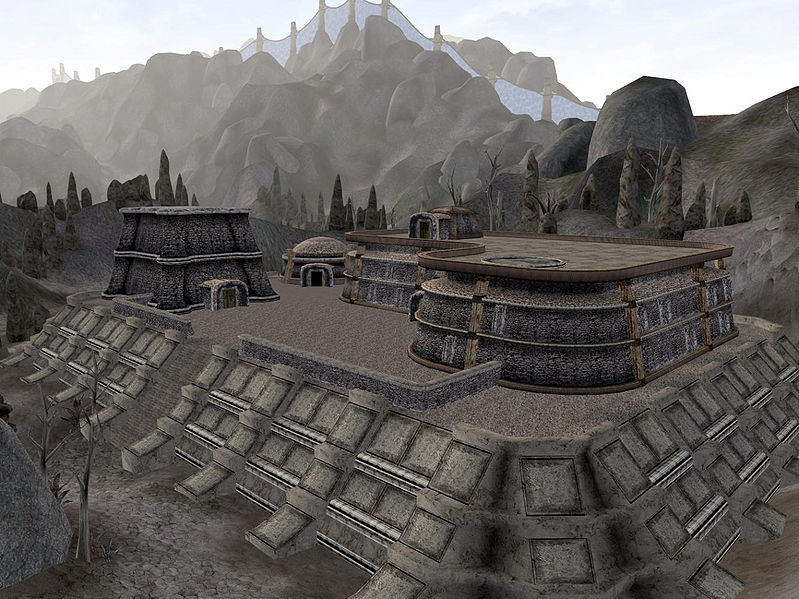
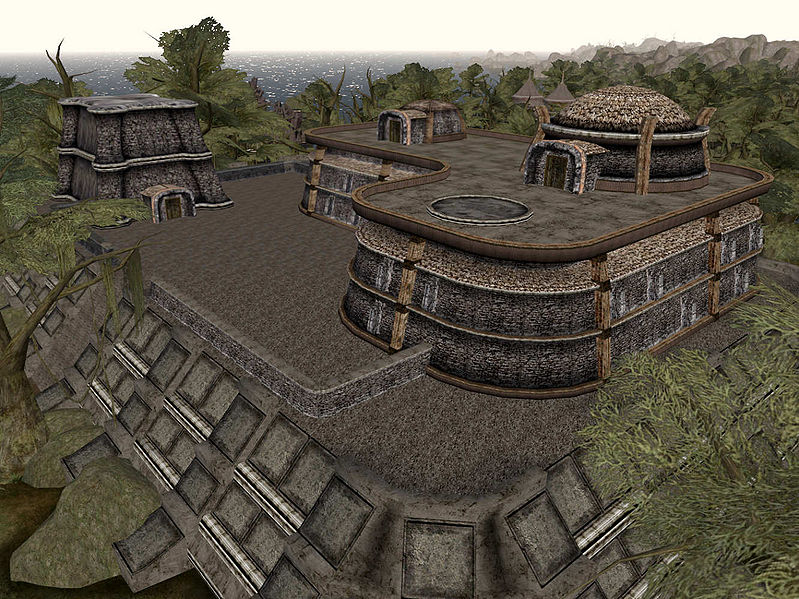
Back to contents.Edited by Aigym_Hlervu on 22 January 2021 19:550 -
Aigym_Hlervu✭✭✭✭✭THE EXODUS

Some crucial remarks on the Velothi Exodus. Among all the lore sources there are only a few stating that the Velothi schism's reason was initially the Daedra worship. It's the Daedra Worship: The Chimer by Phrastus of Elinhir - a completely pro-altmeri Imperial scholar who's works are much doubted by the scientific community, and The Fall of Trinimac by some "Faithless One". All the other sources like the Exodus from Summerset, the Changed Ones, The True Nature of Orcs, Veloth the Pilgrim and other tell that Veloth and his followers were cast out because of the disagreements about the Aldmeri policy - Veloth was proclaiming that the Aldmer were scorned by those who were blind to the corruption and spiritual bankruptcy at the heart of their society, he disagreed when the "religion of the people also changed because of this change in society: no longer did the Aldmer worship their own ancestors, but the ancestors of their "betters." Auriel, Trinimac, Syrabane, and Phynaster are among the many ancestor spirits who became Gods". So it is no surprise Veloth revolted, and it was Trinimac who tried to stop his movement literally or by the means of those who worshipped him by "crying and shaming the ancestors" of the modern Dunmer and even taking "the Missing God's name in vain, calling His narratives into question" - whatever it was, it was only after the social agenda disagreement when Boethiah interfered. So the reason of the Velothi schism was not in the Daedra-worshipping nature of the Velothi teachings - the Daedra came a bit later and simply split the outcasts in two. Looking at the map of the Daedric shrines shows that the process was not instant, it started during the Exodus but massively the Velothi became Daedric Daedra worshippers in Resdayn only. I'll speak of it later here. So, after Boethiah revealed the Tri-angled Truth the Chimer began to abandon the Aedra worship - "Most traces of Akatosh disappeared from ancient Chimer legends during their so-called 'exodus'..". Some sources even say that Boethiah's interference happened at the very end of the journey. Whatever it was in reality, it is only up to each of us what version to believe in. What is worthy of noticing here is that the Veloth's image considered to be holy by the Temple depicts much more a Dwemer than a Chimer we got used to: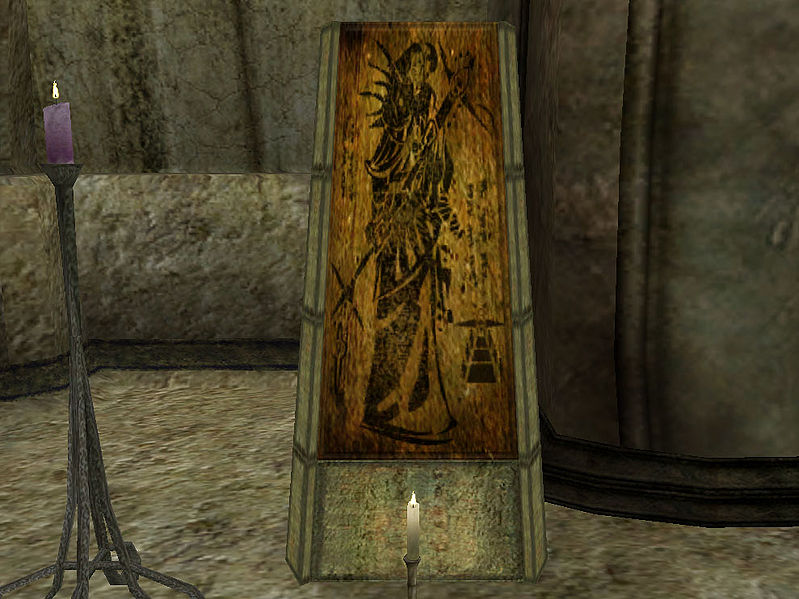

Look at that beard and purely Dwemeri features. Yes, we have seen the spirit of Veloth in Deshaan when we were chasing Magistrix Vox, but you know it as well as I that the spirits can appear very differently and their appearance can change. Many of them can't distinguish the mortal world from the otherworld, the other can't focus, the third lose their memory totally or partially - so, the Veloth's spirit and his appearance is not a credible argument to anything. It could also be used a random model by the developers if they decided not to make a separare model for Veloth like they did for Sotha Sil. I guess it can be true since even Almalexia's model is just a simple Dunmeri woman's model in some uncommon clothes and effects. So, yes, it's just another point of view, as credible as the holy images used by the Temple - I believe those images much more then the 3D model of Veloth we saw in the vanilla ESO in Deshaan. So, the Velothi people changed. Here is the time to remember the two other sources that will give us a bit different translation to the words "Dwemer" and "Chimer":
1. Hasphat Antabolis - "Elves use the term "Dwemer," connoting variously "deep-delving," "profound," and "close-counseled"; Imperial usage is "Dwarven," derived in fable from the affectionate regard of the Giant races for their "little" Dwemer friends".
2. The Savants' Notes on Vvardenfell - "Chimer -- literally "the People of the North," an archaic and poetic usage -- were the Elven tribes who followed the prophet Veloth out of the southwest of Tamriel to settle in the lands now known as Morrowind. Dunmer fable says that before their skin turned dark with the Curse, the Dark Elves were known as the Chimer".
Just like the Cantemiric Velothi of Argonia, the Dwemer could be the Profound Velothi of Skyrim. And here we come up to possibly the main riddle regarding the Dwemeri origins - was it Resdayn their homeland or was it.. Skyrim?
Back to contents.Edited by Aigym_Hlervu on 22 January 2021 20:020 -
Aigym_Hlervu✭✭✭✭✭DWEMER OF SKYRIM

The problem of the Skyrim origins of the Dwemer lays in the field of a huge gap in the lore performed by the developers since the time they released TES V. They gave an absolutely contradicting information in two equally credible groups of sources. The first group implies that Morrowind has always been the Dwemeri homeland, that when the Chimer came there the Dwemer have already been living there, and that the lands of Volenfell and Skyrim were colonized by the Dwemer after 1E 416 - the time the First Council was founded. The second group of the sources tells that the Dwemer have already had at least 4 fully developed cities in Skyrim by the year of 1E 143 - the date of the Battle of Moesring that made the Falmer ask the local Skyrim Dwemer for help. That means that the Dwemer city of Arkngthamz founded by the Kragens after 1E 440s could not be the leader of Dwemeri alliance in Skyrim earlier that date. See it yourself:
1. On one hand we have Neramo's work saying - "Dwarves of Clan Kragen began to seek new holdings beyond Resdayn. Following the path laid out by the exiled Clan Rourken during their exodus, the Dwarves of Kragen reached what we now consider Skyrim and first established their presence in the region with the founding of Arkngthamz. It's unclear precisely what appealed so much to the Kragen explorers that it was worth settling among the hostile Nords, but in spite of regular attacks by the warlike Men, their city flourished. So much so that it encouraged other clans to expand their own holdings to the west. This loose alliance of clans effectively established a pocket empire of four city-states that were considered unassailable".
This is also supported by the common and totally accepted view stated, say, in the Dwemer Inquiries Vol I (and other volumes too) by Thelwe Ghelein saying - "The Migration of the Deep-Elves from their ancestral Dwemereth, now Morrowind, is a generally accepted fact. Recorded history supports this, specifically mentioning the Rourken Clan's refusal to join King Dumac in the forming of the First Council, and their subsequent exodus to Hammerfell.".
Combining all such sources we'll see that the Rourkens left Morrowind in 1E 420, the Kragens followed them later and thus there were no Dwemeri city-states in Skyrim until that date.
2. On the other hand we have likewise numerous sources describing the interaction between the Falmer and and the Dwemer that happened after the fall of the Falmeri civilization in 1E 143 (read about the date calculation here it's fully based on the existing lore). One of them is Gelebor who said - "We had always maintained an uneasy alliance with the underground-dwelling dwarves, and when faced with extinction we turned to them for help. Surprisingly, they agreed to protect us but demanded a terrible price... the blinding of our race. There were splinter groups that resisted the agreement, and even some that sought alternate alliances. But when it was all said and done, those elves were either slaughtered, vanished or gave up and took the dwarves' bargain".
The Falmer were finally defeated in Battle of the Moesring - "No one really knows when the story of the snow elves began, but the ancient work "Fall of the Snow Prince," which is an account of the Battle of the Moesring as transcribed by Lokheim, chronicler to the chieftain Ingjaldr White-Eye, gives a rather vivid account of its ending. .. For when the snow elf host was shattered on that fateful day, it did not simply disperse - it descended. Into the earth, deep underground. For the Falmer sought sanctuary in the most unlikely of places - Blackreach, far beneath the surface of Skyrim, in the legendary realm of the Dwemer themselves. Yes, Blackreach exists. I have been there, and unlike most of those who have witnessed its terrible glories, I have returned. And I now know the truth about the Falmer. After their defeat by the Nords, the dwarves of old agreed to protect the Falmer..".
Gelebor is not the only Falmeri source though - sources like Diary of Faire Agarwen, Journal of Mirtil Angoth and many other sources including the material evidences like Jolgeirr Barrow, the Snow Prince's resting place, and the Great Statue of Irkngthand support the idea that the Dwemer were living in Skyrim centuries before the Clans Rourken and Kragen came there in 1E 420s - 440s.
So, this is up to you to decide what sources to believe in, to accept, both groups are credible. I chose to believe in the ones supported by the material items like ruins, statues and so on. And these sources also tell me that Skyrim could also be the place Veloth actually came from to Morrowind during his Exodus from Summerset - "It was during the time of Great Despair when Saint Veloth and his people reached the land of Resdayn. For untold weeks they had climbed a mighty range of mountains under Veloth's leadership. Many among the Chimer considered this path to be folly, but they were driven by Veloth's unyielding certainty and commitment. They came upon a great pass, a deep scar in the mountain covered in ice and snow. Veloth drove them onward, chasing a vision that had come to him in a dream. He claimed to see a great hawk in the sky. He vowed that the hawk would lead the Chimer to a new home. They drudged through the pass, but after a time the Chimer could go no farther. A great wall of ice blocked their way.".
The Dunmeth Pass located straight east of the modern day Windhelm is is the only generally accepted place described there to be the location Veloth used to enter Resdayn. How did he manage to get there? Why didn't he use the paths in Cyrodiil or Argonia? How could he pass by the Bosmeri, Khajiiti, Ayleid, Falmeri and possibly Dwemeri lands that unnoticed by all the contemporary chroniclers? These questions have no direct answer in the modern lore. So, since we are left here to speculate, I suppose we can make a theoretical conclusion by combining the information we have.
Back to contents.Edited by Aigym_Hlervu on 22 January 2021 19:580 -
Aigym_Hlervu✭✭✭✭✭CONCLUSION
In conclusion I'll just gather all the things I have written above and will show a brief picture of what I believe in based on the existing lore, it's contradictions, gaps, material evidence, books, dialogues and so on.
1. The Dwemer were the Aldmer whom Veloth was leading in the Exodus. Later those Aldmer split in two groups - the Daedra worshipping Chimer and the "secular" Julianos "worshipping" Dwemer.
2. Veloth revolted against the policy of the Aldmeri society. He and his followers were mocked much and persecuted. The major part of the society even began to mock at their ancestors. The confrontation made the Velothi leave their kin and move towards Morrowind. The journey brought them to Skyrim.
3. Either in Skyrim or at some earlier point during the Exodus a part of the Velothi changed their views to the Three Daedra cult, another part (the Trinimacists) became the Orcs. The third part, as I think of it, became the Dwemer - they were changed into Chimer too, but heeded the initial teachings of Veloth. Just like later the Chimer-Ashladers changed into the Dunmer in spite of the fact that they were loyal to Nerevar, they refused the betrayal of the Almsivi and kept faith in the Three Daedra. At this point the Velothi devided in two groups - the Daedra worshipping "People of the North" (Chimer), or, as I think, "Northern Elves" since there is that "mer" part, who came from the Dunmeth pass to Morrowind, and the "Profound Elves" (Dwemer). Both the Chimer and the Dwemer did not stop in Morrowind - some clans settled in Skyrim, the other continued and settled in Morrowind, the third, the Cantemiric Velothi, even reached Argonia.
4. The teaching of Saint Veloth initially was not about the Three Good Daedra - it was some Aedric cult devoted to Julianos and possibly Akatosh. The beliefs began to change to the Daedra worship later during the Exodus. Not all of the Velothi accepted such changes - the Dwemer and the Dagoth seem to be the only ones who kept heeding the initial faith. Veloth was used as a banner each time the Velothi changed their religion - he was credited as a founder before the Exodus, during the rise of the Three Good Daedra cult, during the Tribunal Era and during the New Temple - each of the three Dunmeri religions claimed Veloth as it's prophet in spite of the major differences between them, in spite of that Anticipation-Reclamations thing, etc.
5. I believe that the Ancient Tales of the Dwemer by Marobar Sul described in many sources like a Dwemer History and Culture by Hasphat Antabolis whom I respect really much, as a total fiction is actually a serious historical document. I believe that those tales describe the early Dwemeri times when they were not that developed yet, when Argonians were indeed living in the Dwemeri lands even before the Dwemer came there. It's no surprise to me that the publisher notes speak of many resemblances of those tales with the Dunmeri ones - they were one nation by the time, the very same people. I suppose that after their defeat the Dwemer became the most slandered people. Their history was rewritten, their image was spoiled, they were stripped off their ancestral ties with their kin and would have been totally erased from history if not the material evidences they left. Their fate is so much similar with House Dagoth with only one difference - the Dagoths have never been called the other race. I suppose it's because their children were distributed among other houses -unlike the Dwemer who vanished entirely. Since the Tribunal were unable to destroy the Dwemeri traces entirely, they began putting the Dwemer into the same row with the other races, though the folk memory and many sources still name them House Dwemer.
6. The Dwemer are also never described as slavemasters anywhere except the only episodes with the Falmer. They've never enslaved goblins, Chimer, Nords or anyone else, but the suddenly decided to enslave the Falmer - this is what we are offered to believe in. The Falmer were another religious fanatics just like the Chimer, so it's no surprise Gelebor said that the two nations had complicated relations. And it's no surprise to me that just like the Chimer, the Falmer accused the Dwemer in the worst things their minds could imagine predictably leaving no space to preserving the Dwemeri point of view. I don't believe that the Dwemer required any slaves at all. I suppose they accepted the Falmer as brothers and junior assistants, but the ungrateful religious fanatics betrayed them themselves, and did things like the ones described in the "fictious" Ancient Tales of the Dwemer VIII.
7. The Dwemer were just the Seventh House of the Chimer. Just like we say "Telvanni mages" we don't mean the mages of the Telvanni race, the Dwemer were likewise just the name of the Great House. All the lore tells us that they were smart, wise, industrious, honorful and highly developed but yet tolerating and friendly culture to those who were living worse, but the same lore describing them that way always makes a conclusion like "The Dwemer were raided by the Chimer. What a scums those Dwemer are!.."
8. Since the Dwemer are the Seventh House, I believe that all the lands from the island of Stros M'Kai, Hammerfell, Skyrim, Morrowind and Northern Argonia can be treated as the Dunmeri ancestral grounds. Have a look at the locations of the Daedric shrìnes in Tamriel - I believe they were all built by the Chimer, the group of the Velothi who turned to the Daedric ways. The quantity of the ruins at certain locations shows a possible way of Veloth's Exodus and the quantity of those who became Daedra worshippers.
Thank you all for reading, I hope it was interesting and gave you the reason for your own thoughts to come to your minds. Have a nice day, guys, and see you around!
Back to contents.Edited by Aigym_Hlervu on 23 January 2021 18:273 -
Ratzkifal✭✭✭✭✭
✭✭✭✭✭What are your thoughts on the Dwemer in Hammerfell disappearing seemingly in the same instance and presumably the same event as the Dwemer in Morrowind?
If the Dwemer are the Seventh House and they are one and the same as the Chimer, but whatever caused their disappearance "knew" them well enough to distinguish between the supposed Seventh House Dwemer and the other Great Houses, how come the Rourken clan of the Dwemer, which migrated from Morrowind to Hammerfell after refusing to join First Council, disappeared alongside the rest of the Dwemer? Politically they had nothing to do with each other anymore.
It stands to reason that they should have been spared that fate just like the other Great Houses if they were truly the same as the Chimer and not a separate race all together.
Personally I think this is a very clear indication that the Rourken were connected to the rest of "House" Dwemer in a way that the other Houses just weren't, enough to bridge the ideological differences and physical distance between them. Blood relation, which is to say race, is the only thing that comes to mind that would connect the Rourken to the rest of the Dwemer even after 252 years.This Bosmer was tortured to death. There is nothing left to be done.2 -
Aigym_Hlervu✭✭✭✭✭Thank you for a good question, @Ratzkifal. My answer will be based on facts I'll explain in details below (with some extra information you or other readers might find interesting), in short it's four points here:
1. It is possible to link the Heart to certain groups of people of the same race without effecting the rest of them.
2. We don't know the real reasons why the Rourken left and the status of their connection to the Heart and to the rest of their House - all we know for sure is that they fought back to back with all the Dwemer and all the Chimer against the Nords and that they settled in Volenfell 4 years after the First Council was formed, being the first evidence of the long Dwemeri expansions to the west to reclaim Skyrim territories and conquer Velonfell ones after the war in Resdayn was won.
3. Signus' Dwemeri lockbox that was designed to be opened by a sample of Dwemeri blood only, was opened without it using the samples of other Elven races combined with the Dunmeri one among them.
4. We don't know the principles of neither Kagrenac nor of the Tribunes they used to manipulate the Heart that makes impossible to find truth of why the Dwemer disappeared while the Chimer did not. The truth is that, since we don't know those principles, since the Dwemer disappeared alone, and keeping in mind the facts that I have already given combined, the Rourken and all the other Dwemer clans did not necessarily have to be a separate race to vanish leaving the other Houses alive.
In order to answer your question we have to know why the Rourken left in reality, what were their relations with the Vvardenfell kin and what exactly were the settings Kagrenac used linking his kin to the Heart. All we have today are just the in-game speculations of different scholars. What do we know for sure are these facts only: all the Dwemer united with all the Chimer, they drove the Nords out of Morrowind and formed the First Council in 1E 416. In 4 years, 1E 420, the Rourken settled in Volenfell, and yet "in the decades following the establishment of peace between the Chimer and Dwemer, Dwarves of Clan Kragen began to seek new holdings beyond Resdayn", though Neramo is much more honest here regarding the reasons of their departure - "It's unclear precisely what appealed so much to the Kragen explorers that it was worth settling among the hostile Nords, but in spite of regular attacks by the warlike Men, their city flourished. So much so that it encouraged other clans to expand their own holdings to the west".
Personally, I think it was the continuation of the war against the Nords this time on their territory - a common thing when you fight off an invader, something that the modern Ebonheart Pact military command is too dumb to understand launching no retaliation attacks into the Covenant and the Dominion lands after the invasions they have performed recently into our territories. We can also recall that book describing the Aetherium Wars I mentioned in the OP - the Dwemer lost it's Skyrim cities to the Nords and reclaimed them later. In order to reclaim them they had to start out from somewhere - I suppose it's another description of the same event of the Dwemeri march to the west as soon as they liberated Resdayn. Why only one Great House performed it? First of all, they might have been not alone in that. Secondly, as Athal Sarys said it his book - "Your beloved Five Hundred Companions may have driven our ancestors from Skyrim, but that was then. This is now". Aside his propaganda, what ancestors did he mean in that line - Dwemer, Falmer or both? There are no references to the Falmeri connections with the Chimer at all, but I've already given many of them regarding the Chimeri connections to the Dwemer and Skyrim both combined and apart. But it's a completely other story.
Anyway, even these facts on the Clans Kragen and Rourken fade when we get to the Falmeri lore I mentioned up there that states that the Dwemer had been living a much developed life in Skyrim centuries before the Kragen founded the very first and the main Dwemeri city in Skyrim. A pure contradiction. So, I suppose the statements about the Dwemeri internal disagreements regarding the Chimer are not that credible. They have united once to fight back to back against Nords, but refused to live in peace?.. Why?.. That's not that credible to me, I don't believe it and the lore gives no answers living us to speculate. So, it is possible that the Rourken were not that distant from the rest of their kin as those authors think.
Secondly, indeed, in every line regarding the attunement to the Heart the lore states that Kagrenac was working to benefit all the Dwemer, not just some group of them. I treat it the way his research was conducted for the benefit of the Seventh House only leaving the other Six Great Houses beyond. The possibility to link such a group does exist and it reminds me of the idea of Dagoth Ur to make each of his House kin immortal by linking them to the Heart - ".. will you share the Heart with your followers, as I have, and breed a new race of divine immortals?". He also says regarding his kin - "The Sixth House .. will become, as suits their abilities, either holy warriors or priests. Their .. joy and liberation is to enter even-more-deeply into the profound enlightenment of the divine dreamworld". We also remember those quests both in TES III and the ESO showing us that only the descendands of the Sixth House were effected by Dagoth Ur's powers. And the source of those powers was the Heart he used to communicate through dreams and to grant immortality to his kin, other Dagoths. That was also his claim towards the Tribunal that they did not share their power with the rest of the Dunmer.
Some references on how do the Ash statues work:
Diviner's Journal - "The woman I divined in my dreams has come to us, and the purity of her heritage is beyond even our most hopeful expectations".
Guardian's Decree - "The Wakener has taken the pure-blood into his sanctum".
Wakener's Sermon - "The diggers whisper that they can feel the call of the ash statues drawing them closer, but it is not their rude blood to which the statues sing. I have seen revelation in the eyes of the blood heirs as they held their birthright. True understanding. Through them we will shape the world into its ordained form. Find those whose bloodline speaks to this place. Their awakening is nigh".
Nevena's Diary - "I know what it is. I know what I am. The naked stone in my hands was electric. Jolting me awake and out of the hollow stupor I was cursed to live through all this time. The Temple thinks it can bury the truth, but the only ones they are blinding are themselves. Our legacy lives on. Our House will be made whole again. It's been calling to me all this time, I just couldn't hear it.".
So, it's possible to somehow share it not just among the House kin only, not just race, but also among simple followers. But even if the key is blood, then we have to remember the "trick" performed by Septimus Signus - "Dwemer blood can loose the hooks, but none alive remain to bear it. A panoply of their brethren could gather to form a facsimile. A trick. Something they didn't anticipate, no, not even them. The blood of Altmer, Bosmer, Dunmer, Falmer, and Orsimer. The elves still living provide the key". He thought it was a trick to overcome the Dwemeri lockbox, but I suppose it just worked as it was intended with only the Dunmeri blood being enough to open it. Why it was not a trick? First, because only the Chimer shared a great similiraty in their appearance with the Dwemer, while all the other Elves were yet truly other races sharing nothing common but ears with them. Secondly, because I don't believe the Dwemer made a rule and were that dumb to leave a space for "tricks" to avoid that rule. Finally, because the lockbox actually opened without the Dwemeri race's blood but with the Dunmeri blood among the samples. This makes me believe that the Dwemeri blood is nothing special there and the reason why all the Elves disappeared has nothing common with the blood of separate Dwemeri race.
Regarding the mechanism of the disappearance of the Rourken in case they truly had no connection to the rest of their House, I think it happened due to the same reasons the rest of the five Houses (the Chimer) turned into the Dunmer including the Ashlanders who were the least deserving that Azura's curse among all the Chimer and had nothing common politically with the Houses. Yes, I don't believe that Azura cursed the Chimer turning them into the Dunmer - she has never done anything like that neither before nor after it (unlike that stubborn dummy Mehrunes Dagon who performs the same mistake invading Nirno on and on). So, I think it's just Vivec's and his Temple's propaganda to cleanse themselves for what they have done by using the Tools of Kagrenac - the Dunmeri appearance is the direct consequence of the Tribunal's manipulation with the Heart. None of the Chimer were linked to the Heart except the Tribunes, but somehow it had it's effect on all of them. I suppose, were some Chimer in the Outer Worlds during that moment just like Yagrum Bagarn, those Chimer would have not turned into Dunmer too. As we can see, somehow Almalexia managed to negate the "Azura's curse" completely, Vivec - partially, and the most powerful mage among them could do nothing to stay Chimer in his appearance. So, was it Azura that weak or.. Or was it the consequence of the Tribunes' actions? I believe that the only thing Azura did in reality was writing the prophecies and bringing Nerevar back. All the other things she might be blamed for today seems to be the consequence of the Tribunal's policy to increase the numbers of their laity and stay powerful, suppressing Daedric cults and other heresies. Nonetheless, it's a completely other topic, and all we are left to do since the lore does not give us the details is to observe the events based on the reasons and consequences.1 -
Ratzkifal✭✭✭✭✭
✭✭✭✭✭In order to give a proper response I'm going to try and wrap up the whole series of your posts and address the points you make one by one as they appear. I'll paraphrase each of the relevant statements and make them bold and then write what I have to say about it afterwards.- Your first point is that the Dwemer are being referred to as a Dunmer Great House and that is to be taken literally. There is a lot of room for interpretation here. Aside from it obviously being wrong, since they would have been a Chimer Great House and not a Dunmer House, I do not think this is to be interpreted literally. For the reader's understanding they are referred to as a Dunmer Great House and while they were a Great House, they were not Dunmer, but part of the same political institution now referred to as the "Dunmer Great Houses". Their status as a Great House can also be explained by the Chimer recognizing them as the previous inhabitants of the lands. Since the Dwemer build mainly underground there would be little disputes between them if the Chimer moved in one storey above them so to speak, but as a sign of good will, they granted them political power in their own society as a Great House. This also explains why no other nations have been referred to as Great Houses, because of a lack of respect for them. The House of Troubles for example is called a House because it is respected, but it is not made up of any Dunmer at all but 4 Daedric Princes. Any loose collection that is respected by the Dunmer is called a House, except for the Tribunal or the true Tribunal because they are above the rest.
- You discredit sources contradictory to your theory on no basis other than them not being Dunmer in origin. There is no reason to doubt the Imperial Geographical Society, especially since they have no stakes in the political affairs of Morrowind and stand nothing to gain from bending the truth. If anything, their sources for the parts they weren't there for are the Dunmer themselves. Now if there is a big conspiracy going on to try and make the Dwemer look like a separate race, then I would call into question how the wide-spread knowledge about the Dwemer being another Great House like any other hasn't been wiped from public memory as well. And wouldn't they have tried to do the same with House Dagoth if this was their reasoning?
- Yagrum Bagarn's dialogue is meant for a contemporary listener. That it is, but this does not make the Dwemer and Dunmer/Chimer the same thing. It makes sense that he would refer to the Chimer as Dunmer for a contemporary listener to not cause confusion, but if they were truly the same thing, then he would have little reason to not mention that, especially since he is talking about misconceptions about the Dwemer like the one where people speculated that the Dwemer had telepathic abilities.
- Skipping the part about Julianos here, because honestly I think "gods of reason and logic" is not to be interpreted literally but more poetically. Vivec is a poet after all. He is not talking about gods representing reason and logic but highlights that the Dwemer have no gods at all and reason and logic have taken their place. Also they mocked other religions too, they just had the closest contact with the Chimer while the elf-hating Nords would kill them on sight and the subterranean Ayleids were competing for the same land unlike the surface-dwelling Chimer and would have too many disputes to peacefully live together.
- Dwemer ghost and House Dagoth NPCs look the same so they must be the same. Yes, that Dwemer ghost is quite confusing, but I'd say his ghostly appearance can cover up the fact that his skin isn't the right colour. As for the Dagoth beard looking like the Dwemer beards we've seen, this can be explained through cultural exchange. House Dagoth was the closest to the Dwemer after all so it makes sense that some fashion trends would be adopted. The other explanation I could think of is that this is meant to represent how ancient they are. The Dwemer borrow a lot of real world Sumerian aesthetic, especially the beards, so perhaps this is in reference to them being an ancient civilization and House Dagoth clinging to the past.
- The Dwemer must have built the Velothi towers because the other Chimer didn't have the knowledge so therefore they must have been the same. Baseless conjecture. The Aldmer were a highly advanced people with advanced magic. The Chimer, coming from the Aldmer, surely brought knowledge of their old life with them. This transportation network might be one such example. As another example we do not see the modern Altmer using sunbirds anymore today but there is clear evidence that they existed. Some people believe that progress moves backwards in the Elder Scrolls universe because of the advancements of the past and the lack of them in the now, but I think that a lot of the advanced technology/magic has been intentionally kept from the public possibly because it is too dangerous in the wrong hands. This sounds like a wild conspiracy until we remember that the Psijic Order does exactly that and this seems to be the case with the mananauts and the sunbirds too. Essentially most high-fantasy stuff of the franchise has disappeared after the merethic era for some reason. In the case of the Velothi tower technology it is possible that the Tribunal is to blame for this, but that does not make these advancements Dwemer in origin.
Another argument against the Chimer and Dwemer being the same despite the similar looking architecture is the fact that the Velothi towers clearly were build with bricks while the Dwemer architecture uses large monoliths shaped into impossible forms as if they could bend the rock itself, which they most likely actually did using their tonal architecture. This would be true for the other Velothi buildings if they started out as the same people. Here we can even look at the new lore ESO added to the Telvanni architecture. A lot of the mushroom towers have been grown around older towers made of bricks which the fungus slowly erodes away. This is a possible indication of the evolution of architectural style over the years. In Velothi times the Chimer all build the same until the Houses had developed their distinct style. The Indoril style seems to be the closest to the Velothi style, which makes sense for the tradition loving House Indoril. It's strange that the Dwemer do not fit into that picture unless of course they have a different origin than the Chimer. - The part about the Exodus isn't that important to the discussion I feel, but you shouldn't throw Phrastus of Elinhir under the bus when that character has been used by our former loremaster to give us reliable information in Q&As. He is not infallible, but he is reliable for the most part. All that needs to be said is that an assumption must be made here so that the theory about the Dwemer being Chimer works at all, while the Dwemer being a separate race works out no matter how the story of the Exodus really went.
- Veloth looks like a Dwemer. Euhm, no, I disagree. His beard looks less like that of our Dwemer ghost and the Dagoth guy from before. The golden rings are missing from it for example. Then there is a contradiction on your part. You cannot discredit one ghost for looking different than he is supposed to because he is a ghost and take another ghost looking like you expect as undeniable proof that the Dwemer looked like the Chimer. If that is the case then the Dwemer ghost in the Tribunal DLC is just as confused and forgot to not look like a Dunmer. You also bring up the point about the limitations of in game models. Yes, that is a good point and ESO even likes to backtrack and change old models once they have more fitting ones, so I grant you that Veloth probably doesn't look like the actual Veloth did, but the same is true for the Morrowind ghost. It's possible they simply didn't bother to make a completely different custom race for this ghost and just gave a Dunmer a fancy beard because it was easier.
- "The Skyrim origin of the Dwemer." Luckily I didn't need to read the entirety of your other forum thread just to understand this one because you see a contradiction where there is none. I believe you are interpreting Neramo's book wrong. It wasn't the first Dwemer city in Skyrim that clan Kragen created but rather Arkngthamz being the first city created by clan Kragen.
"first established their presence" - "their" referring to clan Kragen, not the entirety of the Dwemer, and "first established", as opposed to "established their first presence", referring to the first thing they did in a series of many rather than it being the first presence. Although it was the first presence of clan Kragen. So there were Dwemer there before, just not those of clan Kragen. Interpreting it this way removes the contradiction you refer to and requires no further assumptions or speculations. We know that at least Mzulft and Kagrenzel existed in Skyrim long before clan Kragen came, with the Ayleid's launching an assault on Mzulft to retrieve the Wrathstone, which failed and lead to the construction of the Vault of Mhuvnak. Long after Mzulft fell into the hands of the Nords and was later retaken by the Dwemer around the time clan Kragen made its way to Western Skyrim where they formed an alliance with the already existing Dwemer cities of Raldbthar, the reconquered Mzulft and Bthar-zel.[...]the Dwarves of Kragen reached what we now consider Skyrim and first established their presence in the region with the founding of Arkngthamz.[...]
I think the path the Velothi people took to go unnoticed by everyone is Summerset -> Hammerfell -> Skyrim -> Morrowind. The Snowelven records of them would have been completely destroyed by the Nords along with everything else Snowelven and there was nobody in Hammerfell at the time to notice them.
Now that I have gone through the entirety of the original post in detail I can add a few more thoughts I had.
If the Dwemer and the Chimer are the same, how come the Dwemer have their own language that is so different from Aldmeris that it is almost impossible to translate without speaking the language already?
It couldn't have been to keep secrets or to distinguish themselves from the other Chimer because they kept adding Aldmeris translations to their texts, which would make all of that effort pointless. Even the Snowelves and Ayleids speak something that is pretty much Aldmeris so why would the Dwemer be so radically different, especially if they are Chimer as you say?
On to your response to my initial question. Here is the main reason I had to go back to add my thoughts on all of your previous statements. The third and fourth paragraphs of your response do not make sense to me because you see a contradiction where I see none. I have explained so above, but tl;dr: clan Kragen wasn't the first in Skyrim. As for the third paragraph, that piece of propaganda is meant to agitate and I do believe this Dunmer is doing some cultural appropriation here where he claims all elven advancements can be attributed to the Dunmer and they are in a sense his "ancestors" simply because they are also elves.
Back to the second paragraph though, Neramo might not know, but we the players know that clan Kragen was motivated to go west by the Aetherium. Of course they had to drive the Nords out of the Dwemer cities, Mzulft being one of them and being the ally of clan Kragen. That just as a tangent.
As for the trick with the Dunmeri blood, you would think that if Dunmeri or rather Chimeri blood was the key, then adding the blood of the other Elven races that aren't the key would actually make it not work at all. If we assume that the Dwemer were smart enough not to be tricked, then they would also be smart enough to make the lock not open if it wasn't pure Chimeri/Dwemeri blood. I would figure that, if anyone, then Hermaeus Mora would be the one to know how to trick the Dwemer, although the trick that was presented to us seems kind of obvious - like the first thing I would try if I had no Dwemer blood available. I'd just chalk that up to the difficulties for an author to write someone smarter than themselves though - either you make your character do something that's actually smart, or you make all characters except the smart one very stupid so that the normal one is perceived as smart.
Regarding the influence of the Heart of Lorkhan and the disappearance of the Dwemer, it's entirely possible that anyone could have been influenced by Dagoth Ur if they are open to it and that it was a similar deal with the Dwemer. It makes sense that the ancestor-loving Dunmer are very open to the idea of learning the secrets of their family's past and answering what is essentially the call of their family, but the remains of the Sixth House have integrated into the other five Great Houses which shows to me that the distinction between the Houses is somewhat arbitrary and just comes down to a shared feeling of unity rather than an actual tangible difference.
Which makes me believe that most of House Dagoth should have disappeared along with the Dwemer, since they were perfectly happy with following in the footsteps of the Dwemer with Dagoth Ur's Akulakhan, even if that plan hadn't been made yet. They were fighting on the side of the Dwemer at the time too. Unless of course something was different about the Dwemer compared to the other Chimer. I can understand if Kagrenac is responsible for that, since he wanted to improve the Dwemer, but if the Dwemer and Chimer are the same, then House Dagoth, being in the same boat with the Dwemer, would have been included in Kagrenac's plans too. Why wouldn't he?
If Kagrenac is responsible for the disappearance, perhaps the same rules of having to be open to it applied here only that it exploited a trait shared by the entire Dwemer race, possibly their natural curiousity. That would also explain why Yagrum Bagarn was not affected and the recreation of the events performed by Arniel Gane did not result in the disappearance of more people than just him, as nobody was open to Arniel's ascension experiment and Yagrum couldn't pick up the phone so to speak.
Personally I like to treat the disappearance of the Dwemer as a black box. At the end of the day we do not know how it works, we just know what went into the black box and what came out of it and need to speculate based on that. The Heart of Lorkhan isn't even the only theory with credibility out there, now that we saw the Blackreach public dungeon.
Lastly, about Azura, she does represent vanity in the same way that Almalexia does. Almalexia went insane when she lost her divinity, fearing that people would stop worshipping her and similarly Azura lashed out after the Tribunes who should have been worshipping her tried to replace her, collectively punishing all the Chimer in her tantrum. Even her worshippers call her a "cruel mistress" and since they are closer to the source, I doubt they have simply fallen for Tribunal propaganda or unreliable Imperial narrators.
Admittedly there is little evidence of her committing evil acts outside of cursing the entire Dunmer people, but every of her worshippers knows better than to give her a reason to become angry in the first place, so the lack of evidence is expected. She is certainly not as forgiving as Mara.
If you want to hear my thoughts on the origin of the Dwemer then they either came from Aldmeris before the Aldmer or they are native to Tamriel and Tamriel used to be Aldmeris but got destroyed in the war of the Old and Wandering Ehlnofey.This Bosmer was tortured to death. There is nothing left to be done.2 -
Aigym_Hlervu✭✭✭✭✭Good points, @Ratzkifal, and a good addition to my theory regarding it's controversial approach. The thing I liked much was about the way the Velothi used to travel to Morrowind, i.e. across Hammerfell - that is the idea that somehow has never come to my mind before, actually, and now I have the reason to think it over. An interesting and quite credible idea, indeed. Aside quite a few things that you have perceived wrong in my original posts (perhaps, it's because of my bad English), you have posted a good opinion, and except that part about Veloth in Hammerfell, the interpretation you have posted is not new to me.
The thing I disliked is that your entire response was reasoning your denial of my thoughts entirely without any reasoning to support my idea. It's quite a rare thing regarding such topics for any wise man, so I suppose you had something personal. Though I don't remember if we had any disagreements before. Anyway, you might not understand what I mean if and until we switch the roles and I show you another perspective of it. Both of our opinions are based on the interpretations of the lore, but I perceived your post as if it was implying to some truth intended to break an idea that claims to be truth. I have written it in the thread's title - "a theory" to make it clear that it is just an interpretation, an opinion, and not even a thing I believe in personally. Personally, I operate possibilities, and on almost each thing like this I have different versions based on the lore, each with it's pros and cons, and basically I stick to none of them. Of course, this theory have many cons - it's a theory after all, not Truth One and Only.
Earlier I have published here another theory I have invented, a much bigger one, I'm still trying to find time to correct and improve it - that one does not touch this "Dwemer & Chimer are the same race" idea at all, moreover, it contradicts this theory. So, will you launch another crusade and point at that contradiction between the two of my own theories? Since this thread is dedicated to this theory only, all the facts I used were interpreted according to it's very idea only without pointing at other interpretations. Perhaps, I really should have given controversial reasoning there too, indeed. But to me it was all too obvious to write, and to be honest, I was expecting the readers to help me improve it somehow, point at some pros I have forgotten to mention, because argueing it is something I can do quite well myself as well as anyone who knows the lore quite well. It's not that difficult.
Everything I create regarding the lore is intended to make players see things in a bit unusual way to them, to create the reason for possibly new thoughts to come to their minds. I've been studying TES lore for decades almost from the very beginning, so it's really hard to impress me with anything there. But I have to admit it, you did it with that idea about Veloth in Hammerfell, thank you! I know you're good at the lore study too, Ratzkifal, no need to prove it to me. So, I hope you understand that this theory is not the result of my ignorance or my miscomprehension of the lore - it's just another interpretation that came up to my mind, and I decided to share it since I have found nothing like that on Internet. So, let the articles you wrote be a part of this theory, since I haven't written them myself. You did a good job, and I thank you for your time. It will surely let people think over this theory on their own and, perhaps let them formulate their own views on this topic.1
